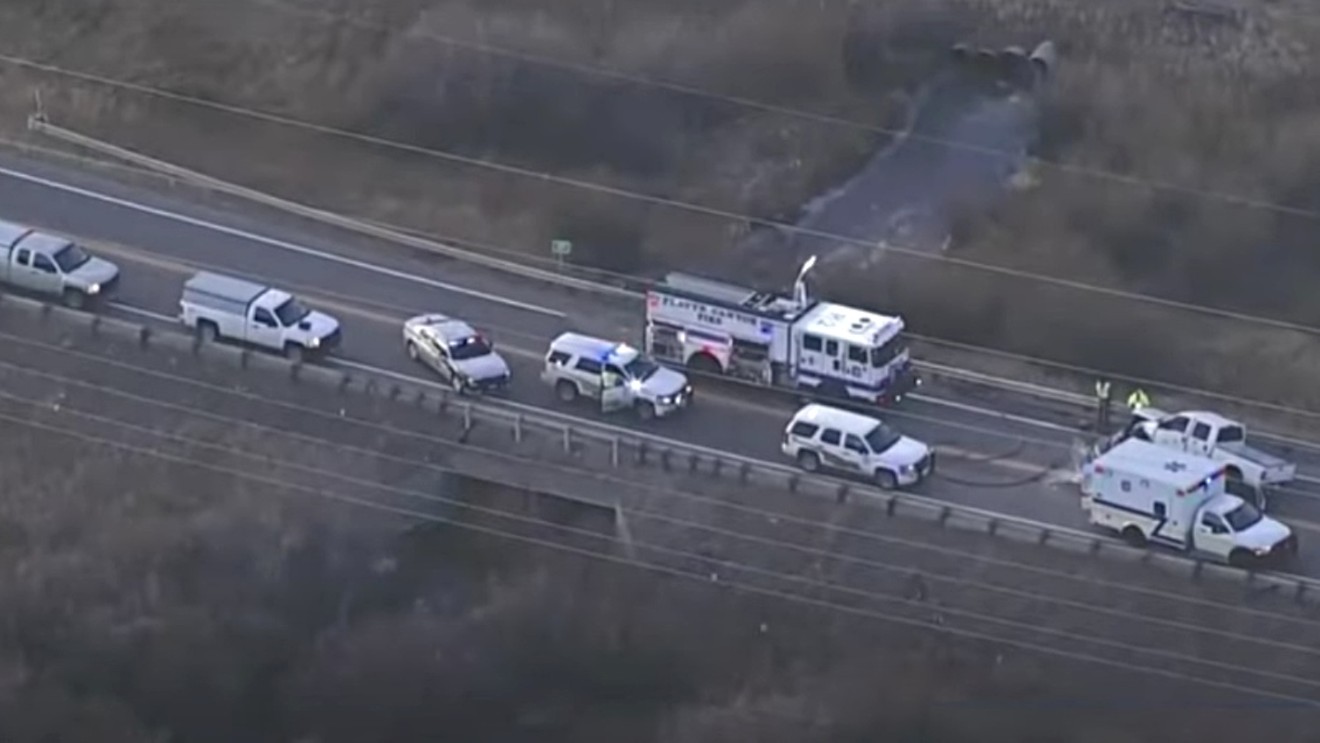Their theory: Risky habits fueled by lower traffic volume during the early part of the COVID-19 pandemic — including speeding taken to crazy extremes, driving while drunk or drugged, and paying more attention to cell phones and other distractions than to the road — continued even after traffic increased, with tragic results.
The problem was exacerbated by a shortfall of resources at law enforcement agencies. But although Colonel Matthew Packard, chief of the Colorado State Patrol, admitted that his agency is "hurting with our staffing" because "a lot of people are leaving the profession" and finding replacements has been difficult, he added, "If I had a thousand more troopers and put them at every spot possible, it wouldn't be enough."
CDOT's preliminary death toll stands at 672, but the total is expected to exceed 700 — and even that number is likely to be lower than the actual death toll by a sizable margin. While the state transportation department estimates that the City and County of Denver experienced 65 traffic casualties in 2021, the Denver Police Department counted 84 deaths last year. That total was the highest since the city launched Vision Zero, a five-year action plan with the mission of "eliminating traffic deaths and serious injuries by making our roadways safer for everyone" by 2030, but it's not an all-time record. According to the DPD, an even 100 people died in 1969 because of crashes.
In 2011, the state's traffic death count was 447 — the low point over the past two decades — but it's jumped 50 percent since then. This graphic shows the trends since shortly after the start of the 21st century.
"What we saw in 2021 was seat-belt use went down, impaired driving went up, distracted driving went up," and super speeding became commonplace — a phenomenon that's continuing, Packard noted. At a staff briefing that morning, he learned that troopers had stopped a person "going 107 miles per hour" — and before the meeting was over, he heard about another person doing the same. "Extreme speeds are becoming more and more the norm, and that's exceptionally dangerous behavior that really takes a lot of lives," he noted.
Impaired driving was involved in around 30 percent of the traffic deaths last year, an increase of 16 percent year over year; 246 deaths fell into this category in 2021, compared to 212 the previous year. And even though fatal pedestrian and bicycle crashes didn't see big bumps, the number of deaths among vehicle occupants jumped by 22 percent, largely because of victims who'd failed to secure seat belts.
The situation was worse in some areas. Even going by state numbers rather than the higher DPD count, deaths in Denver increased by an estimated 29 percent in 2021; they were up 37 percent in Pueblo County. Here are the counties with the highest 2021 fatality counts, using CDOT's figures:
El Paso: 77Despite El Paso County leading this roster, Colorado Springs actually saw a decrease in fatalities in 2021, and Police Chief Vince Niski credited the drop to strategic use of data to focus enforcement actions on the most problematic sections of roadway, communication with city engineers to address areas where design safety could be improved, and the use of ten red-light cameras at select intersections. Tickets issued in conjunction with such devices "are not revenue-generators," he insisted."They are ways to get a message out to our public that you need to drive more safely." To that end, he announced that ten more red-light cameras would be mounted at select locations in the Springs over the course of 2022.
Adams: 66
Denver: 65
Jefferson: 50
Arapahoe: 50
Weld: 46
John Lorme, CDOT's director of maintenance and operations, emphasized that his agency is doing "everything we possibly can to make our roads as safe as we can given our current resources." Aside from a few "pinch points" in the system, he said that he doesn't believe the surge in traffic deaths came as a result of additional cars on the road. More people have moved to Colorado over the past decade, but "our population hasn't increased 50 percent," he pointed out. "We saw a record number of fatal motorcycle crashes and extreme-speeding cases in 2020, and impaired driving skyrocketed. ... Those driving behaviors carried over from 2020 to 2021, and now we're seeing them in 2022."
The state patrol "is doing an amazing job of trying to remove impaired drivers from the roadways," Lorme continued. "However, law enforcement efforts can't do it alone. This problem can only be solved if we all try to find a reasonable solution. We must recommit ourselves to safety, and that includes buckling up, keeping speeds down, never driving impaired and showing a little courtesy to fellow drivers."













